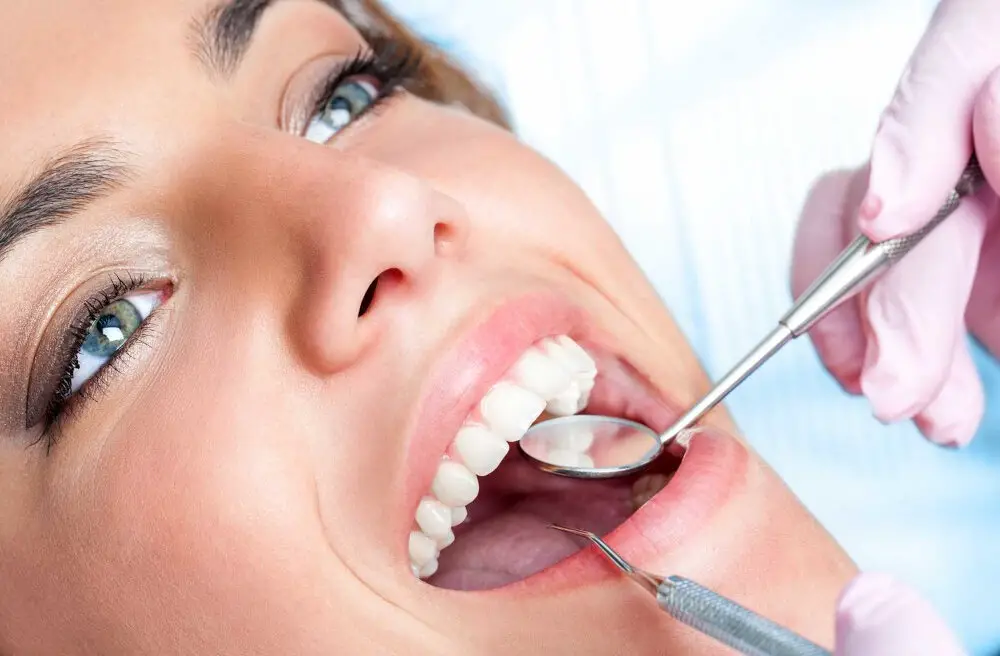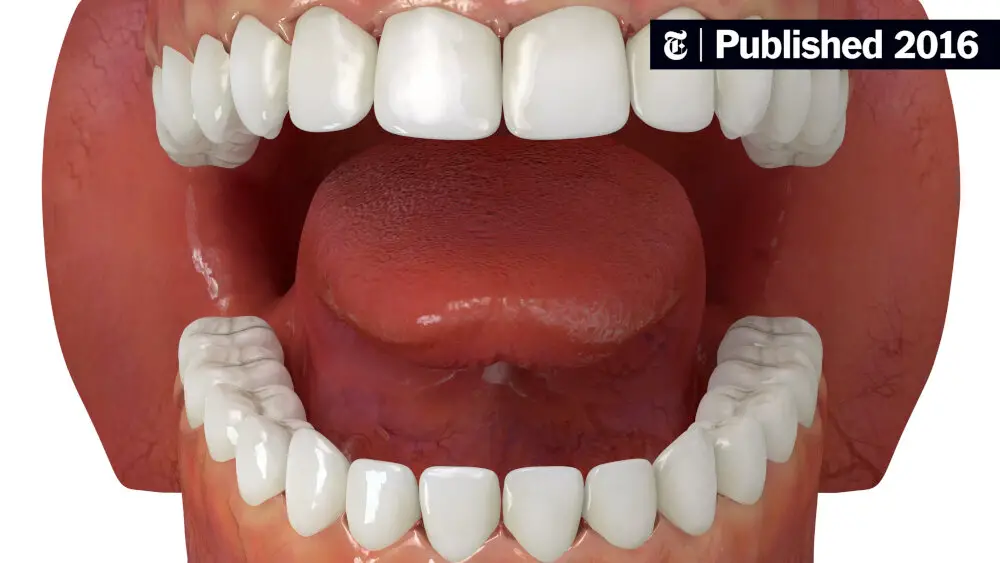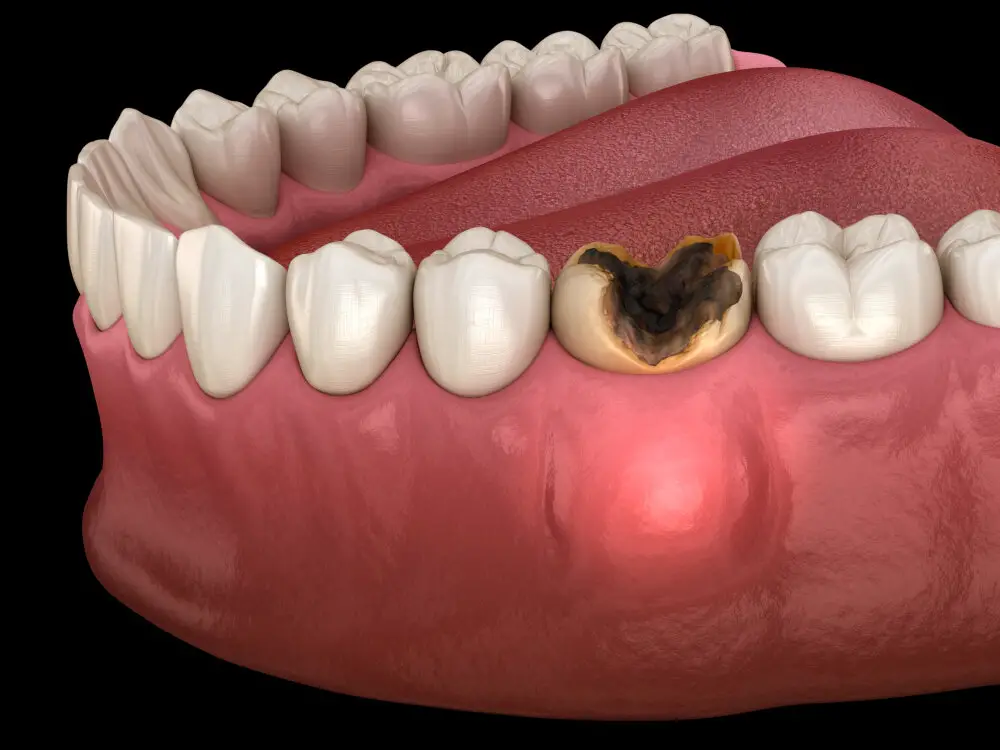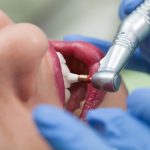Using Straws After Wisdom Teeth Removal: A Comprehensive Guide

Wisdom teeth removal is a common dental procedure that can leave patients feeling uncomfortable and with a limited diet. Although it is a necessary procedure, the recovery period can be difficult, and patients must take extra precautions to ensure they heal properly. One of the most important things to consider during the recovery period is what you eat and drink. In particular, using straws after wisdom teeth removal can be a contentious issue. While some believe straws can help with the healing process, others believe it is best to avoid them altogether. In this comprehensive guide, we will explore the pros and cons of using straws after wisdom teeth removal. We will examine the potential risks and benefits, as well as provide tips on how to use straws safely. Whether you are recovering from wisdom teeth removal or looking to prepare for the procedure, this guide will provide you with everything you need to know about using straws during the healing process. So, sit back, relax, and let’s dive into the world of using straws after wisdom teeth removal.
Wisdom teeth are the last set of molars that usually emerge between the ages of 17 and 25. However, they often grow in an abnormal position or do not have enough room to fully develop, leading to various dental problems such as pain, infection, and damage to nearby teeth. Therefore, wisdom teeth removal is a common surgical procedure that involves extracting one or more of these teeth from the jawbone. The procedure is usually performed under local anesthesia or conscious sedation, and the recovery period may take several days to a few weeks. During this time, patients are advised to follow specific aftercare instructions, such as avoiding straws, to promote healing and prevent complications.
Postoperative care is a critical aspect of any surgical procedure, including wisdom teeth extraction. It plays a significant role in ensuring that patients recover quickly and effectively, with minimal complications. Proper postoperative care involves following the instructions provided by the surgeon, such as taking prescribed medications, avoiding certain foods or activities, and keeping the surgical area clean. Failure to comply with these instructions could lead to infections, bleeding, and other complications that could prolong the healing process. Therefore, it is essential to take postoperative care seriously to ensure a smooth and successful recovery.
After wisdom teeth removal surgery, it is common for patients to experience pain and swelling in the mouth area for several days. During the recovery period, dentists often advise patients to avoid using straws as the suction created by the straw may dislodge the blood clot which forms after surgery and delay the healing process. However, there are some situations where using a straw may be helpful, such as when consuming thick liquids or smoothies. In these cases, it is important to use caution and ensure that the straw is placed far away from the surgical site to prevent any complications. Ultimately, the use of straws after wisdom teeth removal should be discussed with the dentist or oral surgeon to determine the best course of action for each individual patient.
When Can You Start Using Straws?

After having your wisdom teeth removed, you need to take proper care of your mouth to avoid any complications. One of the most commonly asked questions is when you can start using straws. It is recommended to avoid using straws for the first few days after surgery because the sucking motion can dislodge the blood clot that forms in the extraction site. This can lead to a painful condition called dry socket, which delays the healing process. Therefore, it is advised to drink liquids without a straw or use a spoon to avoid creating a vacuum in your mouth. You should wait at least 3-4 days after surgery before using straws, but it’s best to consult with your dentist or oral surgeon for their specific recommendations. Once you are cleared to use straws, it is important to choose the right type of straw. Choose a wide straw to avoid suction on the extraction site and make sure to place the straw towards the back of your mouth. Avoid bending the straw as it can create suction and dislodge the blood clot. Additionally, make sure to clean the straw properly before use to avoid any bacteria buildup, which can lead to infection. By following these tips, you can safely use straws after wisdom teeth removal and avoid any complications.
Healing is a natural process that occurs in the body after any injury or surgery, including wisdom teeth removal. The initial phase is characterized by inflammation, which is the body’s response to trauma. The inflammation serves to clear the area of debris and dead tissue, and to facilitate the migration of immune cells to the site of injury. Over time, new tissue forms to replace the damaged tissue, and the area gradually heals. In the case of wisdom teeth removal, it is important to follow proper aftercare instructions to ensure a smooth healing process and minimize the risk of complications. Using straws, for example, can disrupt the formation of blood clots and delay healing, so it is generally recommended to avoid them for the first few days after surgery.
There are some instances when it’s best to avoid using straws after wisdom teeth removal. Firstly, using straws may cause suction in the mouth, which can dislodge the clot that forms at the extraction site. This can result in a painful condition known as dry socket, which can delay the healing process. Additionally, if you are experiencing any pain or discomfort in the mouth, using straws can exacerbate the issue, making it harder to manage. Finally, if you have any ongoing dental issues or concerns, it’s always best to consult with your dentist before using straws after wisdom teeth removal.
After a wisdom teeth removal surgery, it is important to follow the dentist’s instructions carefully to avoid complications, such as dry socket. When it comes to using straws, it is recommended to wait at least 24-48 hours before using them. This is because the sucking motion can create a negative pressure in the mouth, which can dislodge the blood clot that forms in the socket and lead to dry socket. After the initial 24-48 hours, it is best to start using small, flexible straws to avoid any trauma to the extraction site. However, it is important to avoid using straws with a lot of suction or force, as this can still create negative pressure in the mouth and cause discomfort. Overall, it is best to err on the side of caution and consult with your dentist before using straws after wisdom teeth removal.
Choosing the Right Straw

Choosing the right straw is crucial after wisdom teeth removal as it can help prevent further damage to the healing area. It is important to avoid using traditional plastic straws as they can cause negative suction which can dislodge the blood clot and delay the healing process. It is recommended to choose a soft, flexible silicone or rubber straw that can easily bend to prevent any negative suction. Additionally, it is important to properly clean the straw before and after use to avoid any further infections. Another factor to consider when choosing the right straw is the size of the straw. It is recommended to choose a smaller diameter straw, as this can help prevent the risk of dry socket. A larger diameter straw can create a stronger suction force in the mouth, which can dislodge the blood clot and delay the healing process. By choosing a smaller diameter straw, you can help prevent any suction that can cause damage to the healing area. Overall, choosing the right straw can greatly impact the healing process after wisdom teeth removal, and it is important to take the necessary precautions to ensure a smooth recovery.
When it comes to choosing the right type of straw to use after wisdom teeth removal, there are a few options to consider. Firstly, there are reusable straws made from materials such as silicone, stainless steel, and glass. These are durable and environmentally friendly, but require thorough cleaning to prevent bacteria buildup. On the other hand, disposable straws made from paper, bamboo, or plant-based materials are convenient and hygienic, but not as sturdy and may not be suitable for hot drinks. Additionally, there are also flexible straws that can bend to comfortably reach the mouth without causing discomfort or irritation to the surgical site. Ultimately, the choice of straw will depend on personal preference and the specific needs of the individual post-surgery.
There are two types of straws that can be used after wisdom teeth removal; reusable straws and disposable straws. Reusable straws are eco-friendly and can be used multiple times, which can be very convenient. However, they require thorough cleaning after each use to avoid contamination, which can be a hassle for some people. On the other hand, disposable straws are very convenient and require no cleaning, making them ideal for those who don’t want to deal with cleaning. However, they are not environmentally friendly and can contribute to plastic waste. It is important to weigh the pros and cons of each type before making a decision on which one to use after wisdom teeth removal.
When it comes to choosing the best type of straw to use after wisdom teeth removal, there are a few recommendations to keep in mind. Firstly, it is important to choose a straw that is soft and flexible, as hard or rigid straws can irritate the sensitive surgical site and potentially lead to complications. Silicone or plastic straws that are designed specifically for sensitive teeth or post-operative use are good options. Additionally, it is important to avoid using straws for the first few days after surgery, as the suction required to drink through a straw can dislodge the blood clot and delay the healing process. Overall, selecting a soft, flexible straw and avoiding its use in the initial healing period can help make drinking more comfortable and promote a faster recovery after wisdom teeth removal.
How to Use a Straw Safely

Using a straw after wisdom teeth removal can be a tricky task, but with the proper precautions, it can be done safely. First and foremost, it is important to wait at least 24 hours after surgery before attempting to use a straw. This is because the suction created by the straw can dislodge the blood clot that forms in the socket, which can lead to a painful condition known as dry socket. Once the 24-hour mark has passed, it is recommended to use a straw that is wider in diameter, as this will reduce the amount of suction required to drink. It is also important to position the straw towards the back of the mouth, away from the surgical site, to avoid any disruption to the healing process. In addition to these precautions, it is crucial to properly clean the straw before and after use. Bacteria can easily accumulate in the small crevices of a straw, which can lead to infection. To prevent this, the straw should be thoroughly washed with hot water and soap before being used for the first time. After each use, it should be rinsed with hot water and soaked in a mixture of vinegar and water for at least 10 minutes to sanitize it. Following these guidelines will ensure that using a straw after wisdom teeth removal is a safe and comfortable experience.
After wisdom teeth removal, it’s important to take proper care to avoid complications and ensure a speedy recovery. One of the key considerations is how to drink fluids without disturbing the surgical site. Using a straw can be a convenient and comfortable way to stay hydrated, but it’s important to follow some basic steps to ensure that you’re using the straw correctly. First, wait at least 24 hours after surgery to use a straw, as the suction can dislodge the blood clot and cause dry socket. When you do start using a straw, position it towards the back of your mouth and tilt your head back slightly to avoid creating suction near the surgical site. Additionally, choose a wide straw to allow for more air flow and avoid sucking too strongly. Finally, be sure to clean the straw thoroughly after each use to prevent infection. With these tips in mind, using a straw after wisdom teeth removal can be a safe and effective way to stay hydrated during the recovery process.
After wisdom teeth removal, it’s important to take extra care to avoid complications and discomfort. One of the most helpful tips is to use straws when drinking fluids. This can prevent the suction created by drinking from a cup or bottle, which can dislodge the blood clot that forms in the socket and delay healing. However, it’s important to use caution when using a straw and ensure it’s placed at the back of the mouth to avoid disturbing the surgical site. Additionally, sticking to soft foods, avoiding smoking or alcohol, and keeping the mouth clean with gentle rinses can also aid in a smooth recovery process. By following these tips, patients can minimize discomfort and speed up the healing process after wisdom teeth removal.
Potential Risks and Complications

After wisdom teeth removal, it is vital to be aware of the potential risks and complications associated with using straws. The suction created by using straws can dislodge the blood clot that forms in the empty tooth socket. This can lead to a painful condition known as dry socket, which can cause throbbing pain and delay the healing process. Additionally, using straws can cause swelling and bleeding, which can be harmful to the healing process. Furthermore, using straws can also lead to infection in the affected area. Bacteria from the mouth can enter the wound site through the straw and cause an infection. This can lead to more severe complications, such as an abscess or the spread of infection to other parts of the body. Therefore, it is crucial to avoid using straws after wisdom teeth removal to prevent any potential risks and complications. Instead, patients should drink liquids from a cup and avoid any activities that create suction in the mouth, such as smoking or blowing up balloons. By following these guidelines, patients can ensure a smooth and successful recovery after wisdom teeth removal.
Using straws after wisdom teeth removal may seem like a harmless act, but it can actually lead to potential risks and complications. The suction created while using a straw can dislodge the blood clot that forms in the extraction site, leading to a painful condition called dry socket. Dry socket can delay the healing process and may require additional treatment. Furthermore, the pressure created by sucking through a straw can cause swelling and bleeding in the extraction site, leading to prolonged discomfort and a higher risk of infection. It’s crucial to follow the post-operative instructions given by the oral surgeon or dentist to avoid any complications and ensure a smooth recovery.
After wisdom teeth removal, it’s common to experience some discomfort and potential complications. Recognizing and addressing any problems that may arise is crucial to ensure a smooth and successful recovery. Pay attention to any signs of infection, such as fever, severe pain, or swelling, and contact your dentist or oral surgeon immediately. Additionally, if you notice excessive bleeding or difficulty breathing, seek medical attention right away. To address any discomfort or pain, follow your dentist’s instructions for pain management and take it easy for a few days. It’s also important to maintain good oral hygiene and avoid using straws or smoking, as these activities can increase the risk of complications. By staying vigilant and taking proactive steps, you can minimize the risk of problems and ensure a speedy recovery after wisdom teeth removal.
In summary, using straws after wisdom teeth removal should be avoided for the first few days to prevent dislodging the blood clot and delaying the healing process. Instead, patients should opt for other methods of hydration such as sipping water or using a syringe to drink liquids. Soft foods that are easy to chew and swallow should also be consumed during this time. As the healing process progresses, patients can gradually introduce solid foods and resume regular oral hygiene practices. It’s important to follow the post-operative instructions provided by the dentist or oral surgeon to ensure a smooth recovery and minimize the risk of complications.
Following postoperative care instructions after wisdom teeth removal is crucial for ensuring a smooth and successful recovery. These instructions are designed to promote healing, prevent complications, and reduce discomfort. Failing to follow these instructions can lead to a range of issues, including dry socket, infection, bleeding, and prolonged recovery time. Therefore, it is essential to carefully read and follow the instructions provided by your dentist or oral surgeon. This includes avoiding certain foods and activities, taking medications as prescribed, and attending follow-up appointments. By following postoperative care instructions, you can help ensure a comfortable and successful recovery after wisdom teeth removal.
In conclusion, it is recommended to avoid using straws for at least the first few days after wisdom teeth removal to prevent any complications. However, if it is necessary to use a straw, opt for a wide straw and position it towards the front of the mouth to minimize suction on the surgical site. It is also important to rinse the mouth with saltwater after eating or drinking to promote healing and prevent infection. Following these guidelines, along with proper oral care, can help ensure a speedy and successful recovery after wisdom teeth removal.
Conclusion

In conclusion, using straws after wisdom teeth removal can pose some serious risks to the healing process. The suction created by using a straw can dislodge the blood clot, delay the healing process, and cause painful complications. It is important to follow the post-operative instructions provided by your dentist or oral surgeon to ensure a speedy and successful recovery. While it may be tempting to use a straw for your favorite drinks, it is best to avoid them altogether for the first few days after the procedure. Instead, opt for soft foods, plenty of rest, and proper oral hygiene practices to promote healing and prevent further issues. Remember, a little bit of patience and caution can go a long way in ensuring a smooth and uneventful recovery from wisdom teeth removal.






